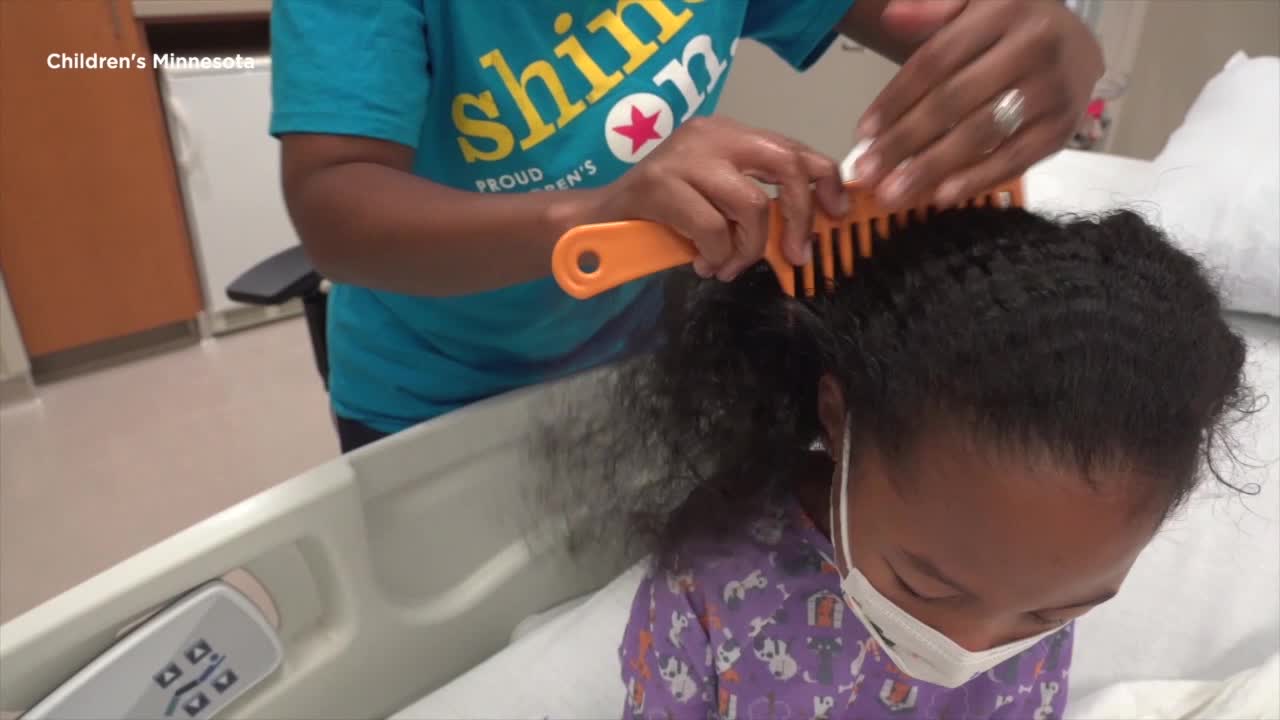Children’s Minnesota works to address hair equity gap in health care
[anvplayer video=”5163471″ station=”998122″]
Nurses at Children’s Minnesota are working to ensure health care workers understand how to properly care for textured hair. Over the last year and a half, the hospital system has implemented hair care training and added products for textured hair.
It started when clinical nurse specialist Heidi Shafland had a humble moment while reading an email for pediatric hospitals asking about care for Afro-textured hair.
“It was like a lightbulb went off,” Shafland said. “I have never known how to appropriately do that, and I’ve always been kind of ashamed to ask. It was kind of like, ‘Hold it, we can make a safe space to learn how to ask and teach and learn how to do better.’”
She worked with another clinical nurse specialist, Courtney Kenefick, to develop a training program and acquire the necessary products.
“Literature really reflects that health care workers are not taught about textured hair care and how to care for Afro-textured hair and really what can happen if we don’t treat textured hair the way it needs to be treated,” Kenefick said. “It can cause hair follicles to fall out, but additionally it is a respect and dignity issue as well.”

A training video from Children's Minnesota demonstrates how to properly care for Afro-textured hair. (Courtesy of Children's Minnesota)
They partnered with families to understand what products were missing and how to properly wash, comb and style textured hair. They also worked with Children’s Minnesota’s Diversity, Equity and Inclusion team, as well as the system’s infection prevention and wound ostomy teams.
It started with an idea in 2020, and products were in hospitals by 2021.
[anvplayer video=”5163485″ station=”998122″]
Patients may have their hair washed while they’re in the hospital depending on their length of stay and the procedures they undergo.
“I see it as providing just basic healthcare,” said Adriene Thornton, the manager of health equity at Children’s Minnesota. “We bathe our patients every day, we wash their hair every other day, and people don’t think about the fact that some products may cause your hair to dry out or cause baldness in some kids.”
She has been a nurse at Children’s for more than 20 years and expressed this effort is overdue.
“I remember working with supply chain, and this was in the early 2000s to get products in,” Thornton said. “There wasn’t buy-in, and so it didn’t take very long for those products to disappear. I’m glad Heidi and Courtney took this mantle on, and they made sure it was bought in by supply chain, and we really made sure the staff is on board.”
She understands well the burden families have faced at the hospital.
“My son is a special needs child, my daughter has chronic illness, so we were here all the time,” Thornton said. “I would have to bring my own hair care products, and then I would have to explain to nurses how to use it. And so knowing that parents don’t have to do that anymore — that’s one less thing for parents to worry about and think about.”
The hospital has launched training videos to teach health care workers how to care for different hair textures and how to approach the conversation with families.
“It’s a trust-builder,” said Shafland, who explained not providing proper hair care can affect how other health care recommendations are received by families. “Can you imagine being given recommendations to do something that you knew made no sense because you’d do other damage to your skin or to your hair? How do you trust that person? How do you know if you should follow what you say?”
She said when they share these new hair care options with families, the response is a mix of surprise and gratitude.
“We’re providing everybody what they need when they need it,” Thornton said. “The staff has been really receptive which is really wonderful and they’ve been eager to learn and eager to implement the new products.”